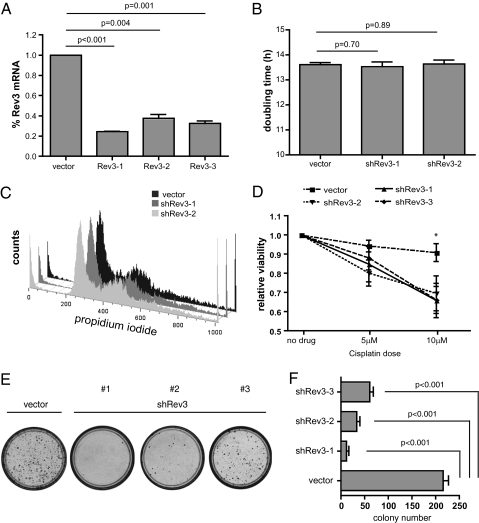Fig. 1.
Rev3-deficiency sensitizes LSL-KrasG12D;p53−/− lung adenocarcinoma cells to cisplatin. (A) Quantitative RT-PCR (n ≥ 3) confirmation of Rev3 mRNA suppression in transduced GFP sorted cell populations. Untreated control and Rev3 knock-down cells were counted and analyzed by flow cytometry to determine (B) overall population doubling times, and (C) cell-cycle distribution profiles (DNA content histogram). (D) Overall cell survival following cisplatin treatment was compared for adenocarcinoma cells transduced with a Rev3 shRNA or a control. Cells were then treated with cisplatin and monitored for cell survival (Cell-Titer-Glo) reagents relative to treated vector control cells (n = 3 independently treated samples for each construct, ± SD. *P < 0.05 for all three shRev3 constructs at this dose). (E) A long-term (14 d) colony-outgrowth assay comparing shRev3 and vector control transduced lung adenocarcinoma cells treated with 15 μM cisplatin. The images shown depict representative 10-cm plates stained with propidium iodide to visualize colonies. (F) Quantification of images collected from three independently treated populations of cells. Data represent the mean colony number ± SD.

